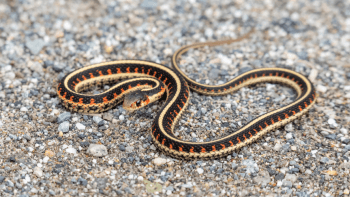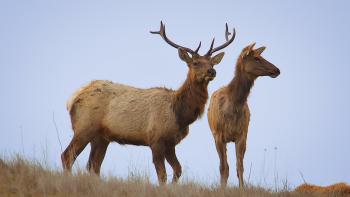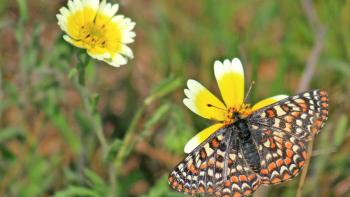Lunar New Year: Year of the Snake
Lunar New Year, also known as Chinese New Year or the Spring Festival, is a two-week celebration that kicks off the start of the new year which is based on the lunisolar calendar. Throughout this period, Chinese families, among others in places like Vietnam, Korea, Singapore, Thailand and Indonesia, participate in a handful of traditions including cleaning their homes, decorating their spaces and towns with red, eating a special meal together, setting off firecrackers, honoring loved ones who are now deceased, participating in a lantern-filled parade and exchanging red envelopes of money. Red, especially during Lunar New Year but in the Chinese culture as a whole, represents joy and good fortune.
In addition, each new year is symbolized by one of 12 Chinese zodiac signs which were used as the initial method to count years, months, days and hours in the calendar. 2025 is represented by the snake, a creature that is commonly found at Open Space Authority preserves and known to be a strong protector and, at times, untrustworthy. Learn more about the various native California snakes that also happen to be red below:
California mountain kingsnake

- Who are they? These non-venomous creatures usually have thick, bright red bands of color around their bodies next to smaller bands of white and black. While California mountain kingsnakes aren’t a danger to humans, they intentionally mimic the look of the venomous Coral Snake to ward of predators.
- Where do they live? Despite their name, California mountain kingsnakes reside all along the West Coast including places as far south as Baja California and as far north as Washington! They mostly spend their time under things like logs, rocks and bark.
- What do they eat? These striped snakes mostly hunt during the day and prey on small mammals, lizards, birds and bird eggs.
Red diamond rattlesnake

- Who are they? Red diamond rattlesnakes don’t quite live up to their name as their “red” coloring is more like a rusty brown, reddish-gray or pinkish brown! While red diamond rattlesnakes are venomous, they won’t hurt humans or make a move unless they feel threatened, and humans can easily tell if the snakes feel this way because they’ll shake the rattles at the end of their tails! Their prey may not be as lucky.
- Where do they live? Although they’re not present in Northern California, red diamond rattlesnakes are commonly found in desert-like and chaparral areas of both Southern and Baja California.
- What do they eat? These snakes are big fans of birds, other reptiles, rodents, ground squirrels and the flesh of other dead animals.
Rosy boa constrictor

- Who are they? Rosy boa constrictors, like the red diamond rattlesnake, may not always appear to be as rosy or red as one would expect, but their bellies offer sights of a pinkish, rosy hue that makes them distinct! These smaller constrictors, which usually range from two to three feet in length, have a very mild temperament and are often found hiding under rocks, logs and in burrows.
- Where do they live? In California, the rosy boa constrictors can be found in the Mojave Desert which stretches from California to Nevada and Arizona.
- What do they eat? In the wild, rosy boa constrictors prey on rats, mice, lizards and birds. Like other constrictors, they wrap their bodies around their prey, squeeze them and then consume them head-first.
California red-sided garter snake

- Who are they? Of all the red snakes on this list, the California red-sided garter snake may be the most vibrant which helps confuse and deceive its predators! While not dangerous to humans, California red-sided garter snakes produce venom that can harm its prey. On average, these beautiful creatures hover around three feet in length and can be found both on land and in water.
- Where do they live? Most California red-sided garter snakes can be found in areas such as Humboldt County, in the East Bay Area as well as along the coasts all the way down to San Diego. In particular, they hang around spaces that incorporate woodlands, grasslands, ponds, marshes and streams.
- What do they eat? California red-sided garter snakes tend to consume fish, rodents, birds, worms and more. And, fun fact, they’re one of the few species able to eat Pacific Newts which are deadly to most predators.
These California native, red-hued snakes may or may not bring good luck, but they do bring joy when spotted in nature! As we start to celebrate the Year of the Snake, take time to appreciate these creatures, reflect on their unique role within the ecosystem and learn more about snakes that are native to the Santa Clara Valley here.



